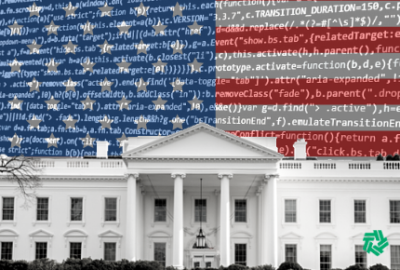

Rep. Gerry Connolly (D-Va.) says agencies relied on "smart IT investments" to disburse COVID-19 pandemic stimulus, but the Senate is passing on plans to give $9...
Two weeks after Congress passed the CARES Act, the IRS, despite 50-year old legacy IT systems, issued half of its first-round pandemic stimulus to households.
The Small Business Administration has run into challenges with its E-TRAN Paycheck Protection Program systems, however, given at least a 20-fold increase in funding for business loans.
Meanwhile, nearly every agency scrambled to increase network capacity and prepare employees for mandatory telework — and got more than $45 billion to do so.
Rep. Gerry Connolly (D-Va.) said the COVID-19 pandemic exposed the “centrality of IT investments” for agencies to function and deliver services to the public.
The CARES Act funding, he said Tuesday at an ACT-IAC virtual resiliency summit, was invaluable to support federal IT, but more is needed. He said he was “disheartened” to find out that the Senate cut the Biden administration’s $9 billion Technology Modernization Fund proposal out of the $1.9 trillion spending bill.
Connolly said lawmakers initially whittled the TMF funding proposal down to $5-6 billion during negotiations — still a major upgrade from the $25 million it received in fiscal 2020 — but ultimately talked the proposal down to zero.
“How do you not see the dysfunctionality of many of the programs and agencies we’re dealing with, to provide benefits to the American people, and the relationship to their IT capability? Logic says invest in that to improve that — to make it more efficient, and to shore up the mission,” Connolly said.
“Without the smart IT investments, your mission will not succeed,” he added.
Congress at first gave the TMF $100 million in 2018. A board oversees the fund, vets agency IT modernization proposals and grants loans to projects that demonstrate a likely return on investment.
While at least six agencies that took loans are moving faster to modernize legacy systems and paying back the loan, lawmakers in recent years have been more reticent to give the TMF the level of funds its most ardent supporters have suggested.
National Science Foundation Chief Information Officer Dorothy Aronson said the TMF is a great concept, but not ideal for small agencies like NSF. The agency submitted proposals to the TMF board, but Aronson said those plans were better suited for the General Services Administration’s 10X program, which backs smaller, more agile projects.
The Labor Department did, however, receive TMF funding to digitize its certification process for temporary workers. Labor Department Chief Information Officer Gundeep Ahluwalia said the project has led to savings, and the agency is paying back its loan.
“The key is not only to look toward the TMF and other areas, but also look inward and free up out of your operations and maintenance. I think it’s a hybrid approach that we need to take,” Ahluwalia said.
Acting Federal CIO Maria Roat said IT modernization and cybersecurity will remain front-of-mind topics for the year ahead, but said adequate TMF funding would help accelerate the adoption of concepts like zero trust across agency networks.
“Being able to execute on that and bring all that stuff together, I was hoping, through the money that was proposed for the TMF, that we’d have some opportunities to really move the needle on looking across the federal government, and where best we could really drive change,” Roat said.
Despite the waning enthusiasm from Congress for funding IT modernization, Connolly said agencies have adapted to new ways of getting work done that will be hard to undo when the pandemic is a distant memory.
“Clearly, we’ve won the battle on telework, in terms of the cultural impediments that existed before the pandemic, and the management mentality that if I can’t see you, you’re not working,” Connolly said.
Congress took slower, more cautious steps than the executive branch to adopt remote capabilities. While House and Senate lawmakers continue to participate in committee hearings virtually, both chambers have insisted on keeping in-person votes.
House Speaker Nancy Pelosi (D-Calif.), however, has reauthorized voting by proxy through April 4, although Connolly said the House would be wise to keep those measures in place even beyond the pandemic.
“Proxy voting may very well be a permanent feature, because if you are sick, or you’ve got a family crisis and you can’t make a vote, why miss it? Send me your proxy, and you’re still recorded. I think we’ve been seeing changes in how we legislate that are, by and large, an improvement and an efficiency that technology grants us,” Connolly said.
The Justice Department’s Drug Enforcement Administration, meanwhile, has adapted well to the move to telework. Alex Smith, the DEA’s chief technology officer, said the agency employees have been able to get a lot more work done working from home than with everyone in the office.
“At the end of the day, the mantra that telework and remote activities might not have been the best for organizations and agencies — depending on IT and cybersecurity and those types of initiatives — I think that has pretty much been knocked down,” Smith said.
“Rapid change is the only thing that’s been consistent over the last 10 months. I think everything has changed, and what we thought we might be doing a quarter ago or three months ago has changed again,” Smith added.
This work arrangement, he said, has worked so well that DoJ is looking at what level of remote work is possible for law enforcement officials at the Bureau of Alcohol, Tobacco, Firearms and Explosives.
“When we look at expanding our cybersecurity initiatives, training individuals on how to do things when you aren’t in the office securely and safely — and then ultimately putting the stopgaps and safeguards in place, so that we can properly maintain our environments from afar — those are the types of challenges that I think we’re pretty much meeting head-on,” Smith said.
Sean Connelly, the Cybersecurity and Infrastructure Security Agency’s Trusted Internet Connections (TIC) program manager, said agencies are looking at the opportunity to enhance telework under the Biden administration, as well as managing security in light of the Solarwinds breach of government systems.
“A lot of the jobs that are coming out from USAJobs allow a remote workforce, allow for a greater spectrum of employees to be outside the D.C. area itself. I think there’s a lot of different ways that we can look to embrace the new technologies out there and leverage a greater percentage of diverse workforces out there,” Connelly said.
If a higher baseline level of telework — even full-time telework — becomes more widely accepted in the federal workforce, Roat said agency CIOs should use their direct hire authorities to recruit the next generation of federal IT talent from beyond the D.C. metro area.
“If you start coupling some of these direct-hire capabilities with the ability to hire people from anywhere in the United States, regardless of where they sit, we’ve got a mobile workforce. Start bringing some of these things together and actually act on them,” she said.
Copyright © 2025 Federal News Network. All rights reserved. This website is not intended for users located within the European Economic Area.
Jory Heckman is a reporter at Federal News Network covering U.S. Postal Service, IRS, big data and technology issues.
Follow @jheckmanWFED


